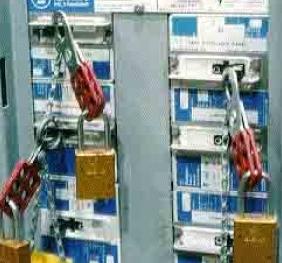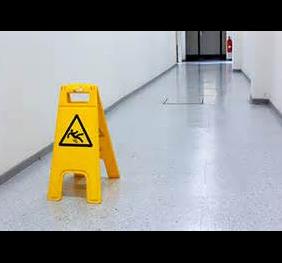


The Federal Occupational Safety and Health Administration (OSHA) and the New York State Department of Labor’s Public Employee Safety and Health (PESH) Bureau regulate and establish workplace safety standards. Below are common workplace safety hazards regulated by these agencies along with tips for ensuring safe work places and residential spaces. If you observe or need assistance with a safety hazard, such as those identified below, related to campus grounds, equipment, facilities or work practices contact the EH&S Office at 878-4038. The EH&S Office works to reduce safety risks and control hazards posed by utilities and other physical conditions through engineering, administrative and other control techniques.
The following are other additional safety hazards and tips geared primarily for campus skilled-trades workers:
Tripping and Slipping Hazards: Avoid placing electrical cords , books and equipment at floor level in walking areas. Be aware of the potential for icy conditions during wintry months and around the change of seasons. Notify Campus Services 878-6111 if there is an ice hazard that needs to be attended to.
Ladder Safety: Working on and around ladders and stairways can be hazardous. Rules for proper ladder use, fall protection and accident prevention can be found in Occupational Health and Safety Administration (OSHA)Publication 3124, "Guide to Stairways and Ladders," .
Electrical Safety: Studies show an overwhelming percentage of workers on electrical systems and equipment are unaware of the potential electrical hazards in their work environment, which makes them more at risk for electrocution. Items such as frayed electrical cords, are often overlooked resulting in electrical shock. Workers and users of electrical devices and systems should routinely check and ensure equipment and devices are in good condition before energizing the devices. More information on electrical hazard recognition can be found at OSHA’s web site.
Electrical safety tips can be found on the https://www.osha.gov/Publications/electrical_safety.html.
Lock Out/Tag Out (LO/TO): LO/TO is a technique to ensure electrical, mechanical and other hazardous energy operating equipment and utility systems are safely de-energized during maintenance work activities. A national OSHA-sponsored study of fatal incidents near or around these types of equipment systems during the period from 1982 to 1997 reported that that 82% of the incidents were due to failure to completely de-energize, isolate, block and/or dissipate the energy source, 11% of the incidents resulted from failure to lock out / tag out energy control devices and isolation points after de-energization and 7% of the incidents resulted from failure to verify that the energy source was de-energized before beginning work. OSHA reports that approximately 3 million workers are potentially vulnerable to hazardous energy incidents on a daily basis and that over 50,000 injuries and fatalities are prevented each year by following proper LO/TO protocols. More information on LO/TO is available on the OSHA web site for LOTO and controlling hazardous energy.
EH&S worker safety policies and procedures addressing the above hazards and other worker hazard safety topics can be found on the EH&S policies and procedures webpage.
Environmental Health and Safety
Some content on this page is saved in PDF format. To view these files, download Adobe Acrobat Reader free. If you are having trouble reading a document, request an accessible copy of the PDF or Word Document.
